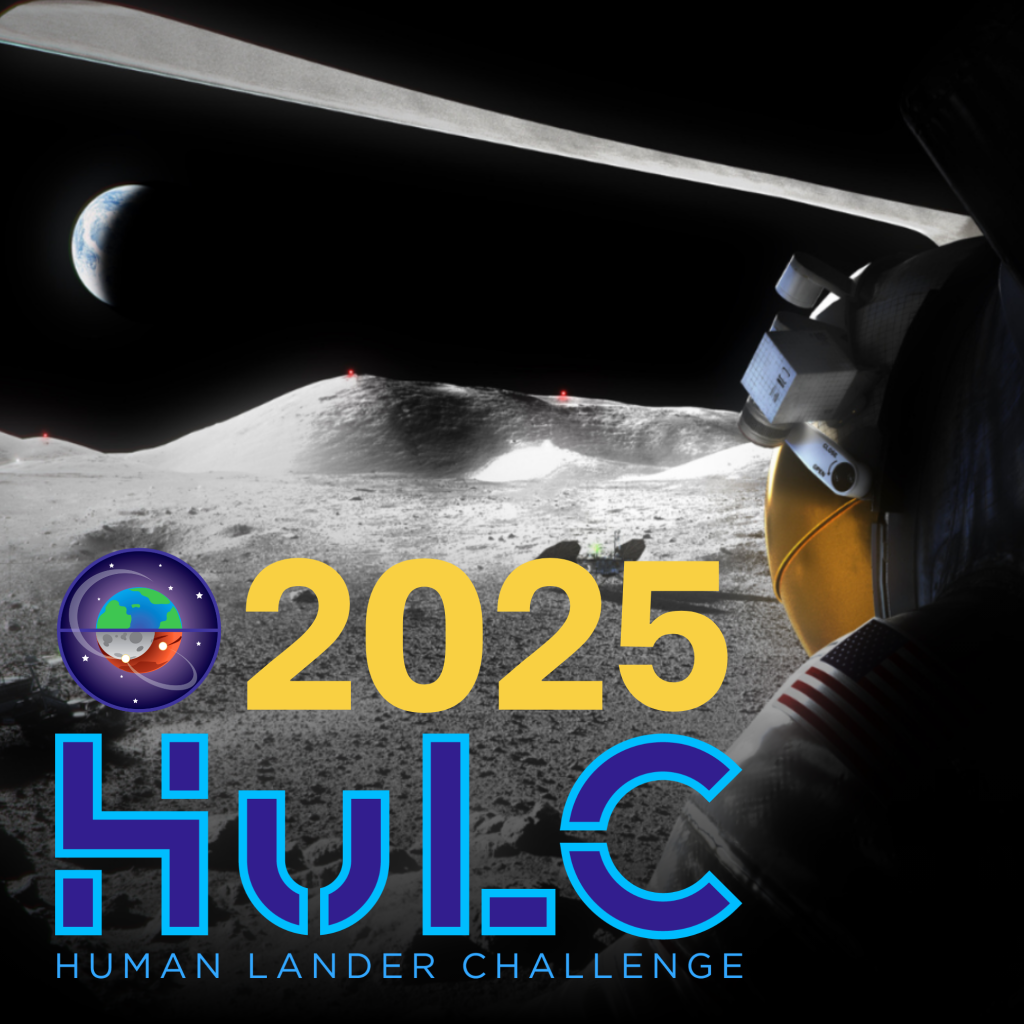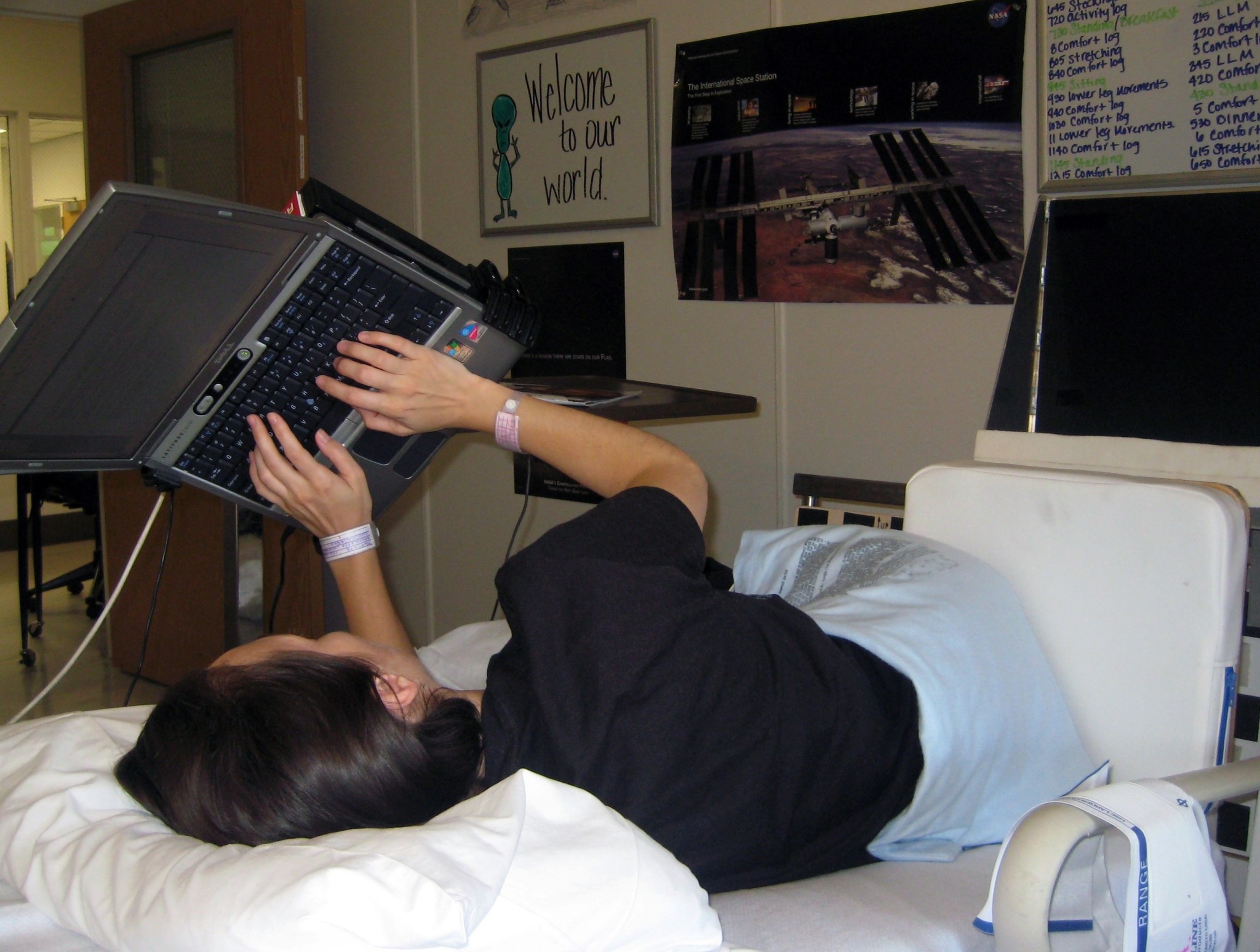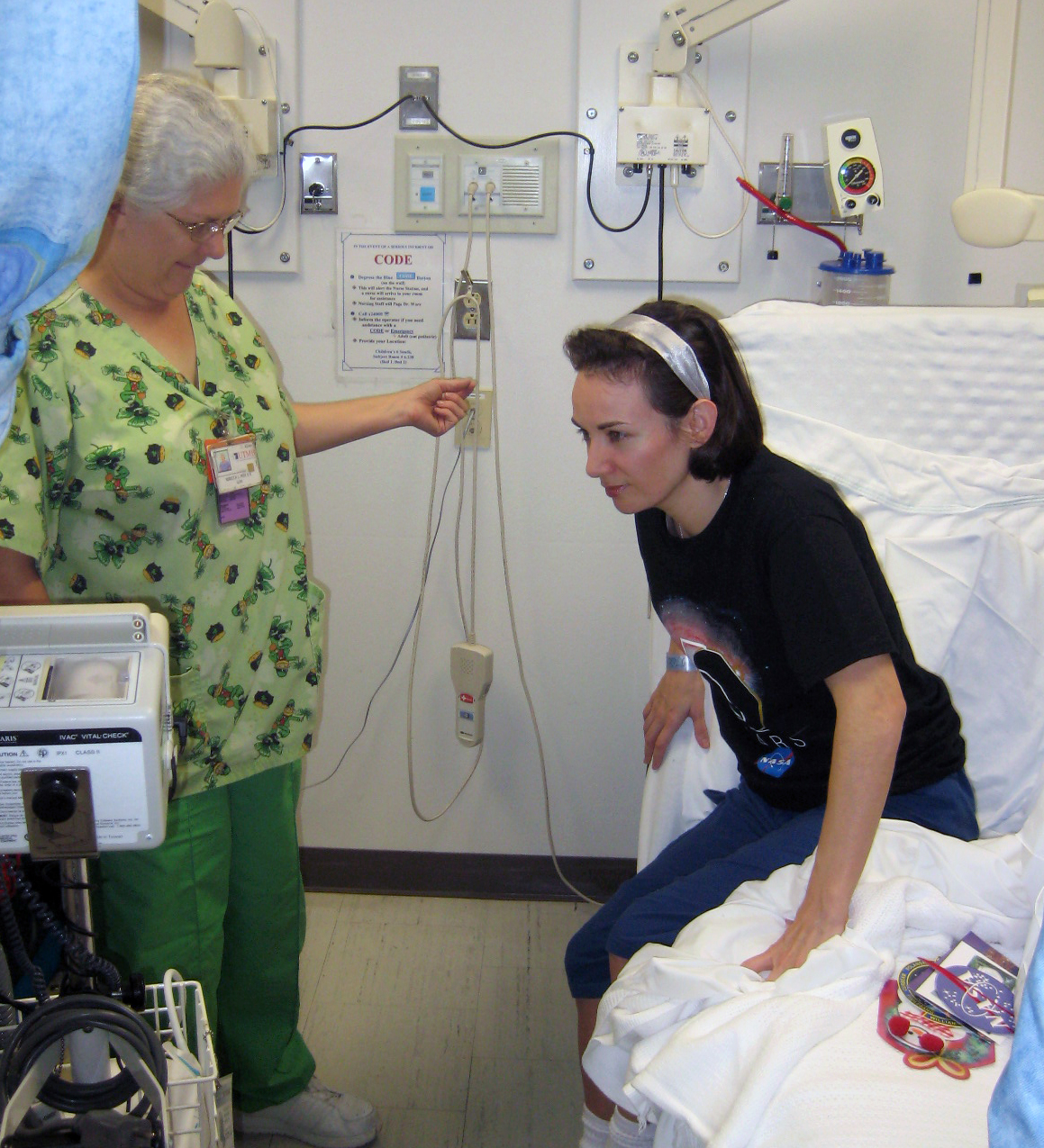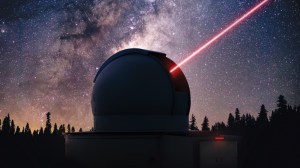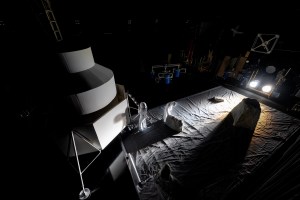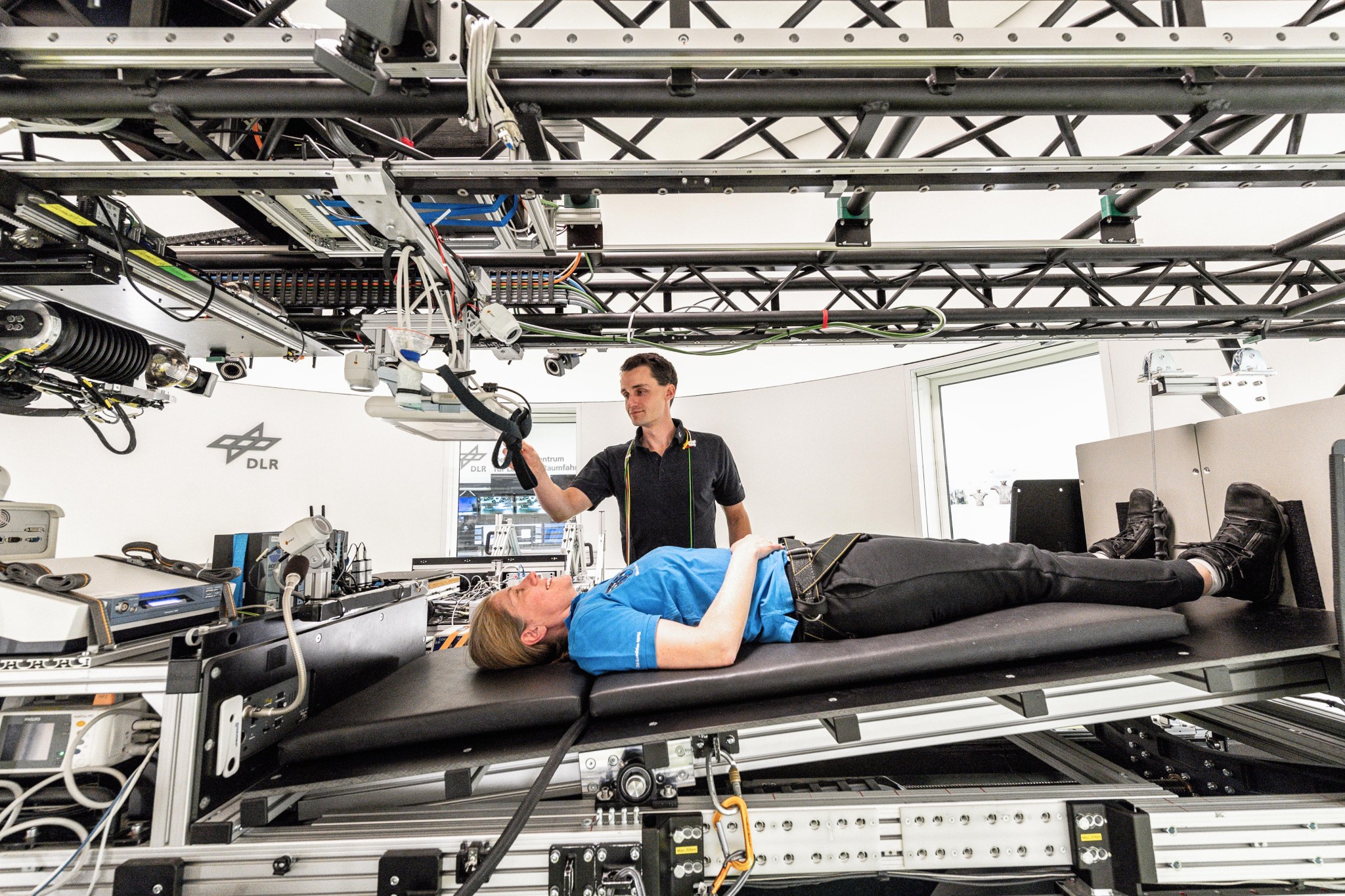
Credit: DLR
Heather Archuletta has taken “one small step” to support NASA’s Moon to Mars exploration approach – only, she never got out of bed.
Archuletta participated in one of several bed rest studies NASA conducts to simulate microgravity and research the effects of simulated spaceflight on the human body. In 2008, she spent 54 days in a tilted position, – at negative-six-degrees, head-down – without ever getting up for any reason – not even to eat, shower, or use the toilet. Also, she later participated in two shorter bed rest studies.
Bed rest studies will support NASA’s accelerated efforts to send astronauts forward to the Moon by 2024, and ultimately, Mars.
Microgravity is a known hazard of long-duration spaceflight and can cause bone and muscle loss, vision problems, as well as cardiovascular deconditioning and immune system alterations. Microgravity cannot be reproduced on Earth for more than a few seconds, but we can mimic some of the effects using constant bed rest. Bed rest unloads muscles and bones from their normal work supporting the body when standing or sitting, while the negative-six-degree, head-down tilt causes fluids to shift to the upper part of the body. This creates conditions similar to what astronauts experience in space.
“Within hours, my teeth were throbbing. Chewing and swallowing were different. My eyes watered and I got a headache,” Archuletta said. “Any attempt to move my head resulted in spinning sensations and acute nausea. My face grew puffy, and I developed back pain. They assured me everything I was going through is similar to what some astronauts may go through, so that kept me going.”
She adapted to the induced “space sickness” within a week.
NASA has been conducting bed rest studies since the 1960s, including some that used a centrifuge to mimic artificial gravity, and this year researchers are putting a new “spin” on the use of artificial gravity by comparing centrifuge sessions. As part of an international collaboration, this study is conducted at the German Aerospace Center, or DLR, in the “:envihab” facility in Cologne, Germany. The Artificial Gravity Bed Rest – European Space Agency study is known as AGBRESA. The spinning of the centrifuge produces an artificial gravity effect, via centrifugal force, to see if this will counter some of the physiological changes induced by microgravity. Artificial gravity may one day be a countermeasure to help astronauts traveling to Mars.
NASA is partnering with the DLR and the European Space Agency to conduct this two-part study with 24 participants divided into three groups. All participants will stay in the head-down, tilt position for the 60-day duration of the study. One group will be a control and will not use the centrifuge. One group will use the centrifuge for 30 minutes per day without stopping. The last group will spin intermittently for a total of 30 minutes.
“The question researchers are trying to answer is, if there was a beneficial effect to spinning, was it better to spin continuously for 30 minutes each day, or can the same benefit be obtained from an intermittent cycle?” said Lisa Spence, flight analogs project manager for NASA’s Human Research Program, or HRP.
The first part of this study included 12 participants and recently concluded. The last 12 participants will begin part two in September.
NASA uses bed rest studies for many reasons, and one of the most prevalent is that it is cost effective.
“It’s actually cheaper than doing the research in space,” said Steve Platts, deputy chief scientist for HRP. “In science, we eliminate variables which are time consuming. We can add isolation or carbon dioxide or use a centrifuge, or not. We do this until we can parse out what’s actually causing the issues we are seeing in space. This allows us to reach an answer better, faster and it’s much less expensive. It’s being a good steward of taxpayer money, rather than trying everything on the space station first.”
Archuletta agrees. “These biological studies are absolutely crucial to one day going back to the Moon or reaching Mars. Off-Earth activity has always provided an incredible return on investment.”
Occasionally rumors circulate that NASA will pay people to just lay around in bed all day. Archuletta was paid about $10 per hour, less than her normal hourly wage. She says the screening is intense, and the testing schedule is rigorous; you must be in elite physical shape to participate.
“I never met anyone in the studies who said, ‘I’m here for the money.’ We do it because we believe in this science … we were committed to developing countermeasures to the effects of being in space. We all wanted good data. We all wanted to succeed. One day, when boots hit Mars, we all want to be able to say, ‘I was a small part of that.’”
______
NASA’s Human Research Program, or HRP, pursues the best methods and technologies to support safe, productive human space travel. Through science conducted in laboratories, ground-based analogs, and the International Space Station, HRP scrutinizes how spaceflight affects human bodies and behaviors. Such research drives HRP’s quest to innovate ways that keep astronauts healthy and mission-ready as space travel expands to the Moon, Mars, and beyond.







